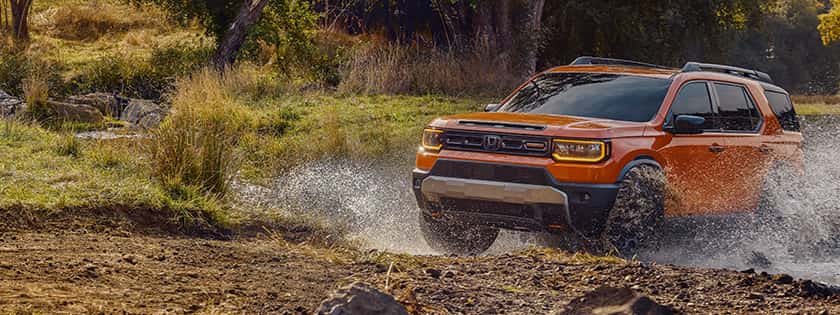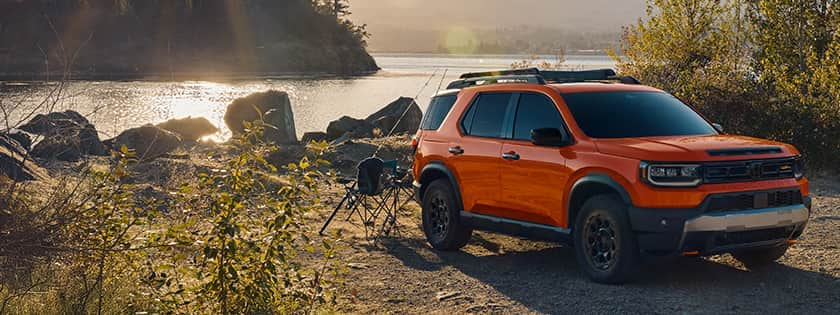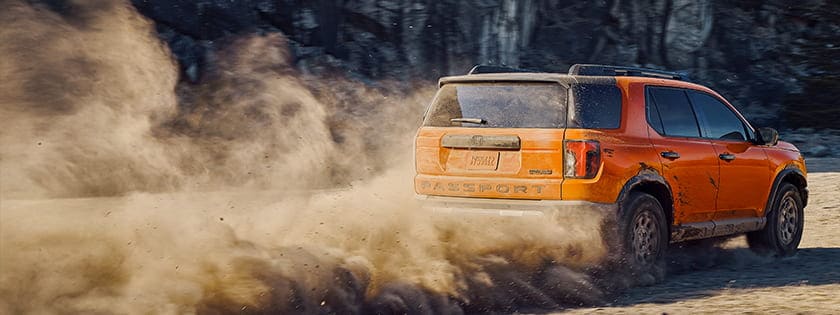
While everyone else was busy covering the Paris Auto Show, I snuck a 2011 Chevrolet Corvette Z06 over to my place for a little photo session. I took the long way home, too.
But this is no ordinary Z06. This particular Z06 is equipped with the so-called Z07 option, otherwise known as the Z06 Ultimate Performance Package. Apparently, this setup makes the car a full Z0 better.
That's because the act of checking this box represents meaningful upgrades in the suspension, tire and brake departments. Carbon-ceramics and magnetorheological fluid are added to an already-impressive materials list that includes composites, a liberal use of aluminum and more than a little magnesium.

Massive 14-inch 15.5-inch brake rotors are blocking our view of just about everything. Try not to stare. Let's move in closer and take a peek behind. They'll get their chance later.

The Z06's front suspension is of the double-wishbone variety, but it's hard to see exactly what's going on because this hard foam air deflector (green) is partially blocking our view.
What we can see includes the expected forward-mounted steering (yellow) and a large front stabilizer bar (white). No surprises here.

Peeling the deflector back reveals an aluminum lower control arm (yellow) and the stabilizer bar's short attachment link (green).
We also get our first peek at the shock absorbers (white), which are different on this Z06 because of the Z07 option. Instead of the fixed-damping monotube shocks found on a "normal" Z06, these Z07 bits are GM's Magnetic Ride Control adjustable shocks.
Most adjustable shocks work by diverting a portion of the shock oil around and away from the byzantine network of tiny passages and shims that makes up a typical damper valve stack. Less diversion forces a higher percentage of the fluid through the valve stack, which creates more resistance and makes the shock firmer, more diversion gives more of the oil an easy way out, and that makes the shock softer. Sometimes the amount of bypass is "infinitely" variable in real-time with computer controls, other applications are manually set to a specific position by the driver using "clickers" or detents on an external adjustment knob.
But MRC shocks don't work like that. Instead of altering the flow path of the fluid, they leave the valve more or less alone and vary the fluid itself. The shock oil within MRC shocks is laden with particles that respond proportionally to the intensity of an externally-applied magnetic field. As field strength increases, more and more particles align themselves with one another, increasing the oil's apparent viscosity because the magnetic field is oriented at 90 degrees to the fluid flow direction in the shock valve. Computer-control of the field strength in real-time allows the shocks to be adjusted constantly to suit conditions.

Here's another view of the deceptively normal-looking Magnetic Ride Control shocks (white) and a better view of the upper (yellow) and lower (green) aluminum control arms.

The upper control arm bolts to the frame via tie-bars (yellow) and the whole thing is reclined, indicating a healthy dose of anti-dive geometry.

What's been missing so far? The spring. Corvettes use a transverse leaf spring (yellow) instead of coil springs or torsion bars. Transverse leaf springs date back to the earliest "horseless carriage" days of motoring, but that doesn't mean they don't have a place here.
This one is about as low to the ground as a spring can be, and it's made of a lightweight composite material. The "spring seat" is a mere pin that juts up from the lower control arm. There's no need for a nut at the top because, well, as you can see, this photo was taken at "full droop" and the spring is still preloaded and fully engaged with the arm.

Also, a single composite leaf spring (yellow) can span the entire width of the car and handle the left and right sides. The same pre-load that keeps it seated against the lower arms also holds it up against the magnesium front subframe (green), so a simple pair of light-gauge clamps are enough to keep it held in place.
That's right, I said magnesium front subframe. Magnesium is used here on the Z06 to save weight (it's 2/3rds the weight of aluminum) and improve front/rear weight distribution by saving that weight on the front end. It's also an engine cradle, because the forward pair of engine mounts bolt in from above.

Add the front knuckles to the list of suspension parts made of aluminum.

Suspension position sensors measure what the suspension is doing at any given time and help the computer decide how to tweak the MRC shock system at any given time.

The Z07 option also gives our car wider wheels and tires than a standard Z06, and these rub marks (yeah, that's a functional brake cooling duct) tell us there isn't enough room left for anything more.
So if you're thinking about an upgrade to you late-model Corvette, don't go any larger than P285/30ZR19 on 19x10-inch front wheels with a 40mm offset. Mounted and ready to go, the special Z07 forged aluminum ones weigh 58 pounds -- not bad at all for what would be big REAR tires on most other cars.

OK, enough torture. Let's look at these brakes. Once again, the Z07 package ups the ante, because these 6-piston front calipers are squeezing carbon-ceramic brake rotors.
And these are the most drivable carbon-ceramic brakes we've yet sampled. Usually CCBs are grabby when cold (and by "cold" I mean most low-speed driving away from a track). Oftentimes they squeak. It's enough to make them a pain in the butt for routine street use, and we usually recommend them only when track-days are in one's future plans. But these Z07 pieces are really nice. We don't see, feel or hear the usual CCB crankiness here, and of course they really work when pressed hard. If you have the money, go right ahead.
How much money, exactly? The Z07 package costs $9,495, and for that you get the brakes, the MRC shocks, big forged wheels and Michelin Pilot Sport PS2 summer tires and beefed-up cooling. We think it's a bargain. Porsche charges $8,150 for CCB alone.

Six-piston calipers have a massive pad window, so they need some sort of brace to keep the clamping forces from prying them apart. That's where this bridge bolt (yellow) comes in. It's easily removable when it comes time to change pads.
And you'll get ample warning when the time comes because the wire just above it (orange) goes to an electronic pad wear sensor. Trust me. You do NOT want to run these pads down far enough that the backing plates start tearing up your hyper-expensive rotors.

Those rotors attach to their central aluminum hub with 10 pins that allow them to float so left/right pad pressure (and pad wear) stays equalized within the fixed caliper.

Moving to the rear, another massive CCB rotor blocks our view of the double-wishbone suspension. This time it's a 4-piston caliper, but who's counting? Oh, that's right -- I am. You are. We all are. That's what we do here.

Here are your aluminum upper (green) and lower (yellow) a-arms, as promised. The single lower ball joint means there's also a toe-link (orange), and of course there's a rear stabilizer bar (white) and its short attaching link.

Like the front, the rear spring is composite transverse leaf.

Here's a better view of the spring seat (yellow) and how it interfaces with the lower control arm.

Also like the front, the rear transverse leaf spring (yellow) spans the car and springs the left and right sides. Unlike the front, the rear subframe to which it mounts (green) is made of aluminum, not magnesium. The use of magnesium here would save a bit more weight, but it would unnecessarily contradict the effort to improve front/rear weight distribution.

Here's my standard motion-ratio shot. Left-to-right, we've got the MRC shock (0.85:1, but less because of the lean angle), the spring (about 0.62:1, hiding in the shadows) and the stabilizer bar drop-link (more or less 0.5:1).

This is a perfect example of why some wishbones are called "a-arms". Yes, the knuckle it attaches to at the pointy end is made of aluminum, too.

Are those rear cooling vents "real"? Yep. The rear brakes thank you for asking.

These wheels measure 20x12 inches. The P335/25ZR20 Michelin Pilot Sport PS2 tires they wear are good for burnout stripes over 13 inches wide, if you're into that sort of thing. These massive mounted assemblies weigh in at 65.5 pounds, not bad at all considering the dimensions we're dealing with here.
So what's all this hardware worth on our track? How about two-way average of 1.02 g on the skidpad (1.03 g counter-clockwise, when the driver sits on the inside), 71.6 mph through the slalom and stops from 60 mph in 102 feet, all day long with no fade? Beyond the numbers, the Z06/Z07 chassis turns in crisply and stays neutrally balanced, produces heroic grip and exhibits brake performance that is, in the words of test pilot Chris Walton, "about as good as brakes can be."
They need to be, too, because the engine in this beast is good for 11.8 seconds and 122.7 mph in the quarter-mile. You'll want to be able to stop at the far end.




